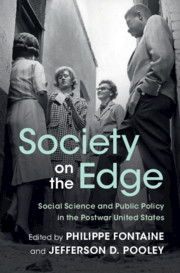7 - Crime
Published online by Cambridge University Press: 28 November 2020
Summary
Chapter 7 describes how interwar sociologists, together with social psychologists and legal scholars, swapped out environmental explanations for the biological accounts. In the early postwar decades, the overall explanatory frame remained environmental, though low-income and subcultural factors had, by the 1950s, largely supplanted immigration and urbanization. New philanthropic attention to delinquency helped guide the federal government's adoption of community action programs under the Democratic administrations of the 1960s, with heavy involvement from social scientists. Johnson's twinned Wars on Poverty and Crime were, at least initially, predicated on the postwar consensus that the root causes of crime were social. An uptick in crime and the urban riots put Johnson and the Great Society's social policies on the defensive-as Republicans refined a racialized backlash politics of “law and order.” By the late 1960s a handful of social scientists had launched high-profile attacks on the prevailing criminological mainstream, coinciding with a federally sanctioned turn toward “crime control” and standalone programs in “criminal justice.” Though still prominent, sociologists shared jurisdiction with other social scientists, including a growing and influential contingent of economists. By the 1980s, crime had been sheared off from other social issues, with the field now centered on crime's efficient management.
Keywords
- Type
- Chapter
- Information
- Society on the EdgeSocial Science and Public Policy in the Postwar United States, pp. 258 - 289Publisher: Cambridge University PressPrint publication year: 2020

